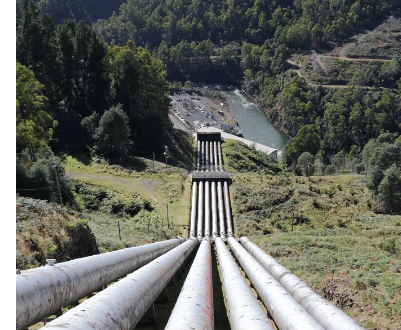Fuel supply in Oceania is dominated by Australia, understandably so since this is the most significant fuel market in the Oceania region. In 2017 alone, this Oceanic country exported approximately 7 billion cubic meters of gas per day. As a result, Australia maintains its role as a vital supplier of global energy needs, especially in the Asia-Pacific region.
That made up about 60% of Australia’s total production, where 46% of it was exported to Japan while China got 31%. Between 2016 to2017, Natural gas represented the third biggest energy production source, making up 23.1% of the total energy production, only behind coal and renewable sources.
The others were oil and natural gas liquids at 3.3% and liquefied petroleum gas at 0.5%, as per Australia’s Department of Environment and Energy report in 2018.
Natural gas production
In 2018, natural gas comprised 84% of Oceania’s overall hydrocarbon production in BOE (barrel of oil equivalent) terms. Every fuel trader in Oceania knows that most of this comes from Australia. Offshore production makes up almost two-thirds of Australia’s gas supply. The latter is forecasted to represent approximately 85% of this region’s natural gas from 2019 to 2025.
Stepping outside Australia, Papua New Guinea is another emerging player in this industry. Although this country is much smaller than Australia, its fuel output is expected to double by 2025. Most of Papua Guinea’s gas is exported, which is forecasted to surge in alignment with the LNG export capacity expansion. Still, companies will be mandated to reserve about 10% of gas production for domestic use.
Global ripples
Although Australia may not have to import petrol or crude oil from Russia for their fuel needs, the world oil market operates as one big pool. Therefore shifts in one area of the market conditions swiftly affect other geographic regions. Over half of Russia’s oil and natural gas exports go to other European nations.
Due to Russia’s current invasion of Ukraine, experts are concerned about further shortages and price increases. Currently, fuel prices have significantly hiked since the charge, which occurred in the first quarter of 2022.
Fuel storage in Australia
Fuel storage in Australia is done in bulk, where companies within this industry store massive volumes of fuel in addition to running import terminals. The fuel is neither processed nor transformed while in storage.
Take away
This piece has covered various aspects of the fuel industry in Oceania, including forecasts and data on recent production parameters. The fuel industry in Oceania is predicted to grow substantially within the coming years. It remains to be seen how substantially Oceania’s fuel industry will expand.
 HammBurg Be informed with latest news, reviews, entertainment, lifestyle tips, and much more.
HammBurg Be informed with latest news, reviews, entertainment, lifestyle tips, and much more.




